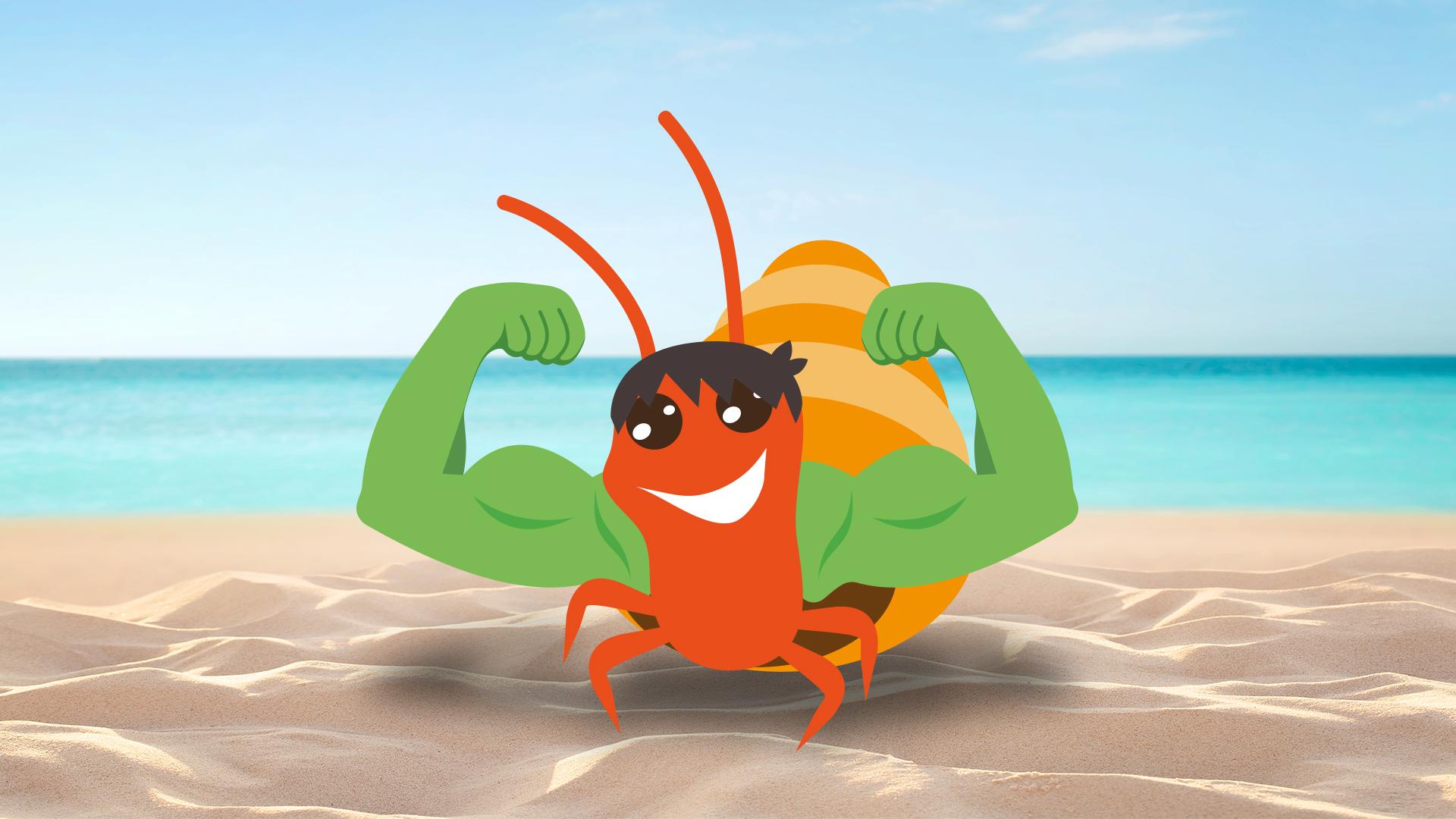Why are hermit crabs turning to plastic waste?
- Published
- comments
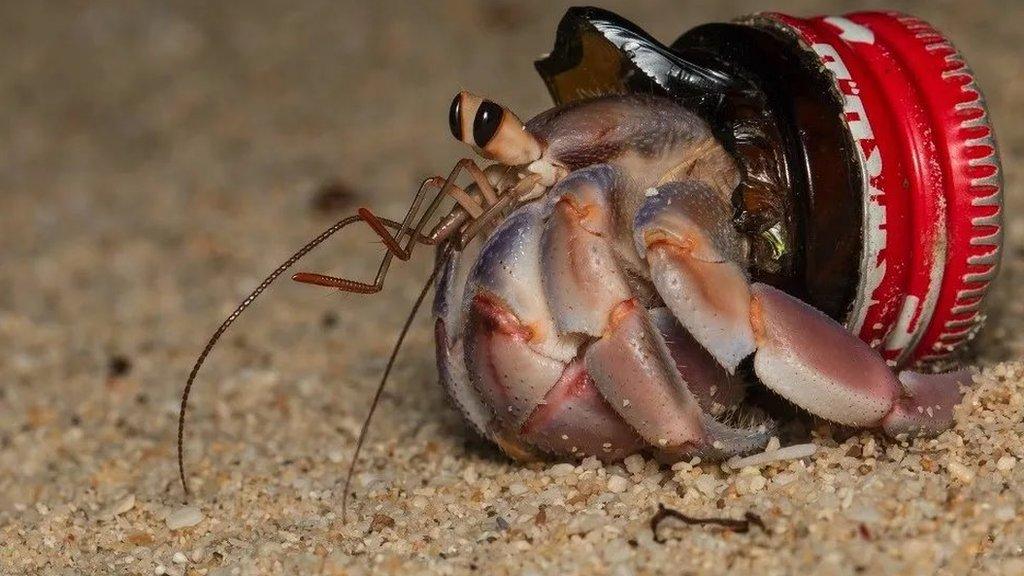
Hermit crabs are using plastic objects like bottle caps as shelters
Hermit crabs are known for finding hollow objects like snail shells to protect their soft bodies.
However, a new study shows the species, which are part of the crustacean family, have been turning to plastic waste as an alternative.
It's raised concerns for scientists who are recognising how wildlife is being increasingly impacted by plastic rubbish.
Experts think that by 2050, the amount of plastic in the ocean will weigh more than the amount of fish in the ocean.
As part of their study, researchers looked at hundreds of images of hermit crabs posted on social media and other photo-sharing platforms.
They found a total of 386 of the crabs were using artificial shells in the photos, the majority of which were plastic caps. The crustaceans also used tubing and even lightbulbs as shells.
From this, the scientists calculated 10 out of the 16 species of of land hermit crabs in the world use plastic waste for shelter, and it's a practice that has been observed in all tropical regions of the Earth.
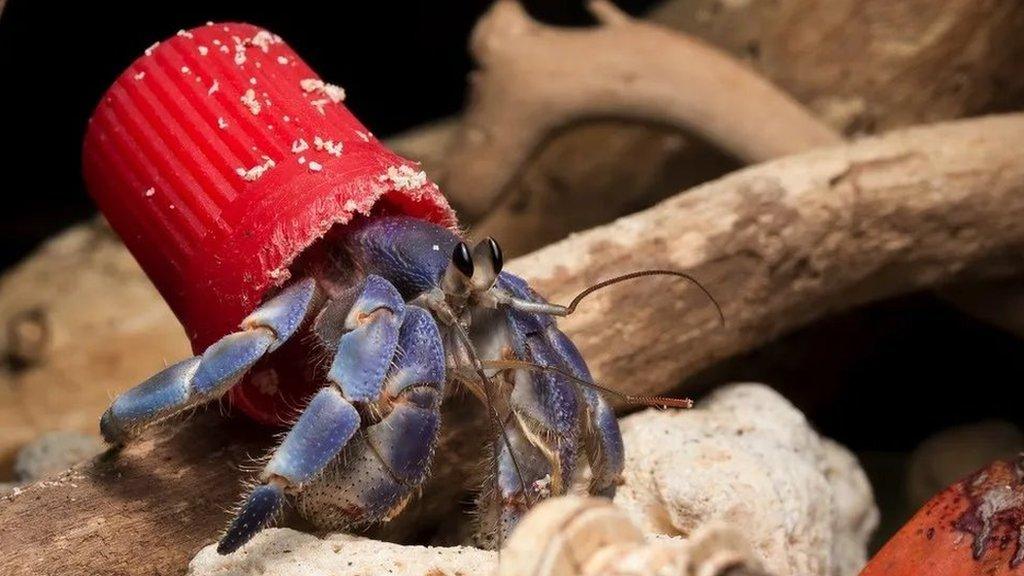
Two thirds of hermit crabs have turned to plastic
"We started to notice something completely out of the ordinary," said ecologist Marta Szulkin from the University of Warsaw, who worked on the study.
"Instead of being adorned with a beautiful snail shell, which is what we're used to seeing - they would had a red plastic bottle cap on their back or piece of light bulb."
It's not known whether these plastic items are harmful to the crabs, but like lots of other sea creatures, it's thought they could be risk.
Why is plastic a problem?
Guide: Why is plastic a problem?
The big problem with plastic is that most of it isn't biodegradable. This means that it doesn't rot or break down, like paper or food, so instead it can hang around in the environment for hundreds of years.
Each year, around 400 million tonnes of plastic is produced and around 40% of that is single-use - plastic we'll only use once before it's binned, like carrier bags, drinks bottles and crisp packets.
Lots of this plastic waste ends up in the world's oceans every year. It can be blown into the sea from ships and beaches, or carried there by river. Some also gets flushed down the toilet.
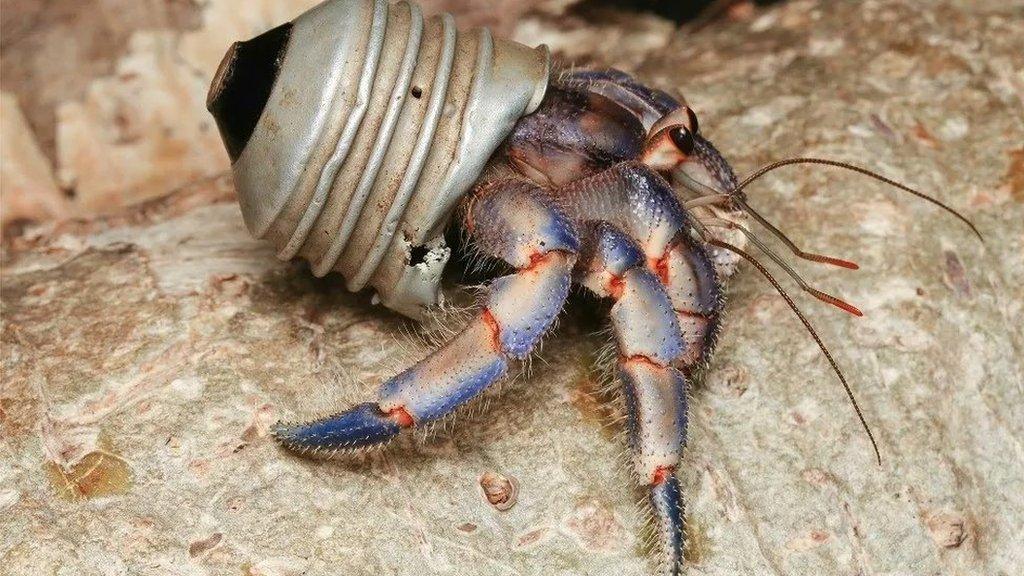
Plastic pollution can be harmful to birds, fish, shellfish and other marine mammals
All animals, whether they live on land or in the sea, can be hurt by plastic. They can get trapped in bigger items such as carrier bags or food packaging.
Birds, fish, shellfish and other marine mammals can mistake plastic for food when it has broken down in to smaller pieces.
It's been estimated that 100,000 animals in the sea are killed by plastic every year.
- Published5 December 2019
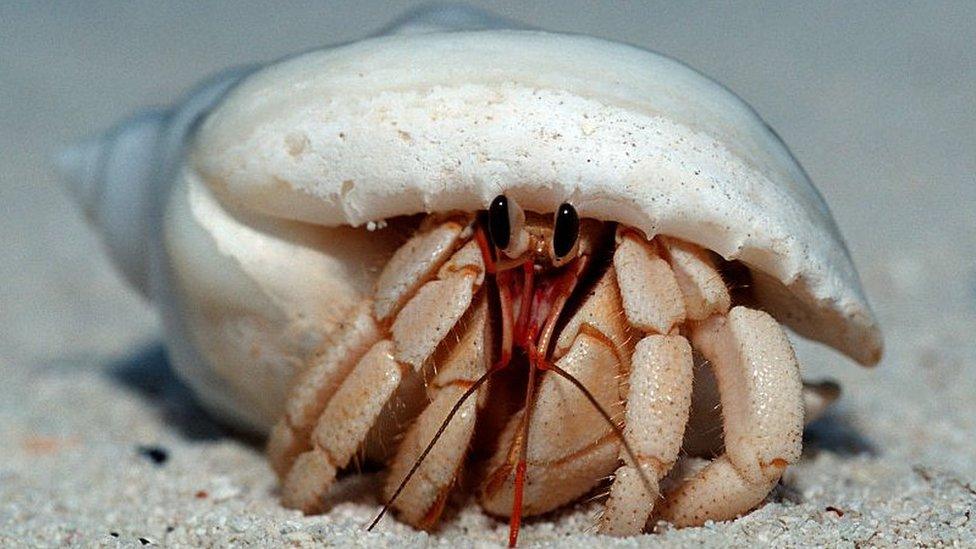
- Published3 December 2022
- Published28 February 2020
